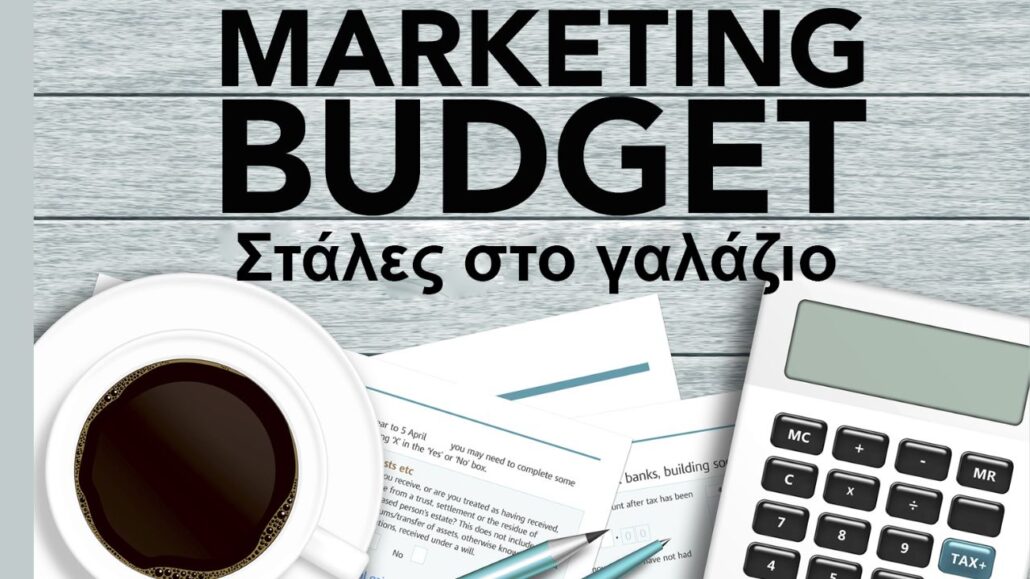Securing insurance necessitates a multifaceted marketing approach. Effectiveness hinges on understanding the target audience, complying with regulations, and leveraging diverse channels. A comprehensive strategy, integrating traditional and digital platforms, backed by analytics, adaptability, and foresight, is key to establishing a strong foothold in the competitive insurance market.
A “direct channel in insurance” is a type of marketing channel characterized by the absence of intermediaries between insurers and customers. This approach minimizes “vertical conflict marketing” by allowing insurers to directly engage with clients, offering transparency and streamlined communication.
Traditional Marketing Channels
Print Advertising
Print advertising, including brochures, pamphlets, and newspaper ads, has been a cornerstone of insurance marketing. While its reach may be limited compared to digital platforms, it still holds relevance, especially for targeting specific demographics.
TV and Radio Ads
Television and radio advertising offers a broader reach, allowing insurance companies to convey their messages to a wide audience. However, the challenge lies in standing out in a crowded space and ensuring that the message resonates with the target market.
Direct Mail
Direct mail campaigns involve sending physical materials, such as postcards or letters, directly to potential clients. This personalized approach can be effective, but the costs and environmental impact should be carefully considered.
Digital Marketing Channels
Social Media Marketing
Social media platforms provide a powerful avenue for engaging with audiences. From creating brand awareness to running targeted ads, social media is a versatile tool for insurance companies to connect with their target demographic.
Search Engine Optimization (SEO)
SEO is essential for ensuring that an insurance company’s online presence is optimized for search engines. This improves visibility and increases the likelihood of being discovered by individuals actively seeking insurance products.
Email Marketing
Email marketing remains a cost-effective way to nurture leads and maintain communication with existing clients. Personalized and relevant content can significantly impact the success of email campaigns.
Niche-Specific Channels
Specialized Marketing Channels cater to specific niches within the insurance sector. These channels are finely tuned to address the unique needs and preferences of distinct market segments.
Embracing niche-specific strategies, such as participating in industry events, forming strategic partnerships, and engaging with influencers in the insurance domain, allows companies to connect with their target audience on a more personalized level.
Niche-specific channels provide an opportunity to stand out in a competitive market by tailoring marketing efforts to the specific interests and requirements of a particular segment within the broader insurance landscape.
Online Aggregators
Online Aggregators are digital platforms that streamline and simplify the process of comparing and purchasing products or services online. These platforms gather information from various sources, presenting users with a consolidated view that aids in decision-making.
In the insurance sector, Online Aggregators play a pivotal role by allowing consumers to conveniently compare different insurance products, coverage options, and prices in one centralized location. This not only enhances consumer convenience but also fosters healthy competition among insurance providers, ultimately benefiting the end user.
Assessing the Audience
The audience takes center stage, encompassing two key aspects:
A. Target Demographics
Delving into the specifics of the demographic landscape is essential. This involves dissecting the audience based on age, income, location, and other defining characteristics. By identifying the unique traits of the target demographic, insurance marketers can tailor their strategies to resonate more effectively.
B. Customer Behavior Analysis
Beyond demographics, analyzing customer behavior provides valuable insights into preferences, tendencies, and decision-making processes. This involves studying how potential clients interact with information, respond to marketing stimuli, and ultimately make choices.
This deeper understanding allows insurance companies to craft marketing campaigns that align seamlessly with the behaviors and expectations of their audience, fostering stronger connections and higher engagement.

Leveraging Analytics for Channel Optimization
Analytics for optimizing marketing channels involves harnessing data insights to enhance the performance and efficiency of various promotional avenues. By employing sophisticated analytical tools, businesses can identify high-performing channels, understand consumer behavior, and adapt strategies accordingly.
This data-driven approach enables precise allocation of resources, ensuring that marketing efforts resonate effectively with the target audience. Leveraging analytics for channel optimization empowers companies to make informed decisions, maximize return on investment, and stay agile in the ever-evolving landscape of marketing.
Regulatory Considerations
Encompass the crucial adherence to legal frameworks and compliance standards within the insurance industry. This facet involves a meticulous examination of laws governing marketing practices, data protection, and ethical conduct.
Navigating the intricate regulatory landscape ensures that insurance companies conduct their marketing activities ethically and within the legal boundaries, avoiding potential legal complications. This aspect is pivotal for maintaining the trust of clients and safeguarding the reputation of insurance providers in a tightly regulated environment.
Emerging Trends in Insurance Marketing
The dynamic evolution of marketing strategies within the insurance sector. It delves into the innovative approaches and transformative shifts that are shaping the future of how insurance products are promoted and distributed.
This keyword signifies a keen focus on staying ahead of the curve, incorporating cutting-edge technologies like artificial intelligence and blockchain. It encompasses the exploration of novel communication channels and the adaptation to changing consumer behaviors.
In a rapidly evolving digital landscape, keeping abreast of these emerging trends is imperative for insurance companies seeking to not only survive but thrive in an increasingly competitive market.
Crafting a Comprehensive Marketing Strategy
Creating a Robust Marketing Approach involves developing a thorough and well-rounded plan that encompasses various channels and tactics. This process goes beyond mere promotion; it entails integrating traditional and digital methods, analyzing audience behavior, and adapting strategies to industry shifts.
Crafting a Comprehensive Marketing Strategy requires a deep understanding of the target audience, efficient resource allocation, and leveraging emerging technologies like artificial intelligence and blockchain.
By fostering synergy between different marketing channels and being proactive in anticipating changes, businesses can ensure a holistic and effective approach that resonates with the evolving landscape of the insurance industry.
Budgeting for Marketing Channels

Effectively managing financial resources within the realm of marketing is encapsulated in the keyword “Budgeting for Marketing Channels.” This concept involves strategic allocation and optimization of funds across various channels to maximize return on investment (ROI).
It encompasses a meticulous process of identifying high-impact channels, understanding their cost dynamics, and aligning budgetary allocations with the overall marketing strategy.
Successful implementation of budgeting for marketing channels requires a balance between traditional and digital platforms, ensuring that each avenue contributes synergistically to the overarching goals.
The approach involves constant evaluation, allowing businesses to adapt to changing market dynamics, allocate resources judiciously, and ultimately achieve cost-effective and impactful marketing outcomes.
Challenges in Insurance Marketing Channels
Navigating the intricacies of Insurance Marketing Channels presents a landscape rife with challenges. These hurdles span from contending with the saturation of traditional marketing avenues to adapting swiftly to the relentless pace of technological evolution.
As the industry contends with the convergence of regulatory compliance and the need for creative breakthroughs in a crowded market, insurers find themselves at a crossroads.
The challenge lies not only in standing out amid competition but also in addressing the implications of rapid technological changes, ensuring campaigns resonate with diverse demographics, and staying abreast of emerging trends to stay ahead in an ever-evolving insurance marketing sphere.
Conclusion
The type of marketing channel that would secure insurance depends on a variety of factors. From the target audience and regulatory considerations to emerging trends and budget constraints, a well-informed decision is crucial.
Crafting a comprehensive marketing strategy that integrates various channels, leverages analytics, and adapts to industry shifts is key to long-term success in the competitive insurance market.
FAQ
What Type of Marketing Channel Would Secure Insurance Use If?
Direct marketing channel: in a direct marketing channel, the products are marketed directly to the consumer without involving a middleman. The intermediary, in this case, can be the use of marketing agencies. Another example is also offering secure insurance exclusively through door-to-door salespersons.
When is Radio Used as an Advertising Medium?
Radio is an effective advertising medium because it’s 100% audio-based. The advertiser’s message can resonate in the consumer’s ears with proper voice acting, sound design, and copy. A radio ad is cost-efficient, targeted, easy to track, and extremely effective if done properly.
Which of the Following is a Type of Vertical Conflict?
What Type of Marketing Channel Would Secure Insurance, Vertical conflict occurs between different levels of marketing channel members. A conflict may result between a manufacturer and a retailer or wholesaler. For example, a retailer might conflict with a wholesaler due to their inability to deliver products on time.
Is the Use of a Combination of Two or More Indirect Channels?
What Type of Marketing Channel Would Secure Insurance, Multichannel distribution is the use of a combination of two or more indirect channels and a direct channel to reach target markets. Market coverage is the geographic area to be served and the density of distribution within that geography.



